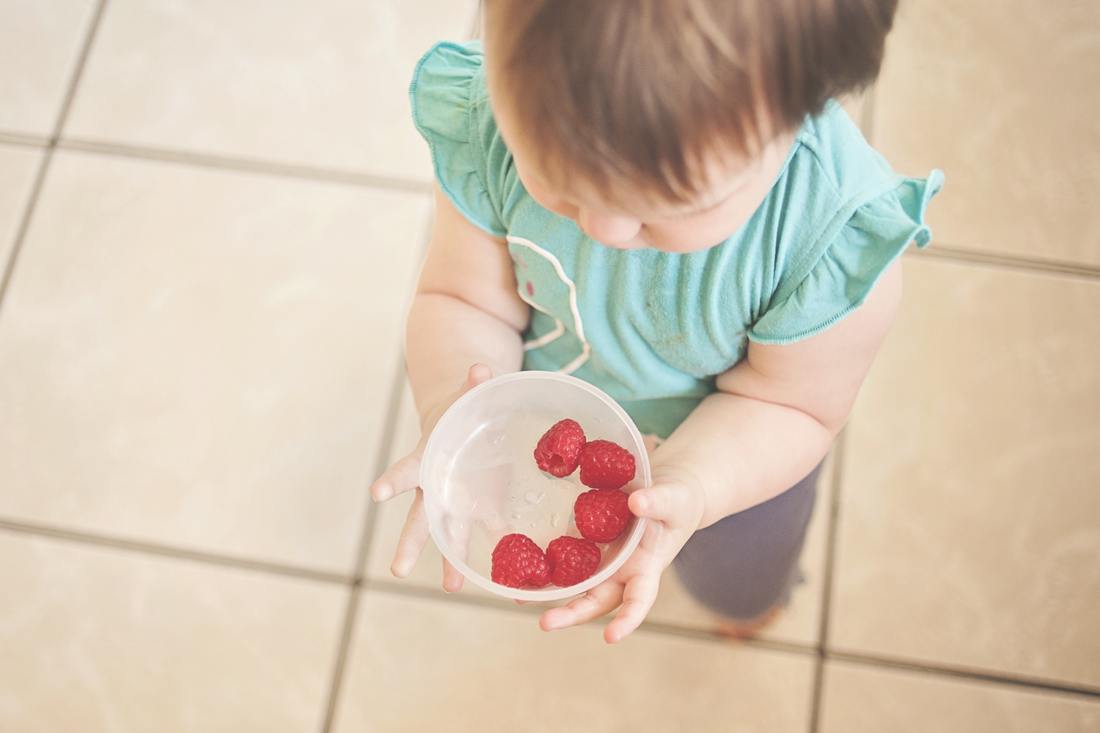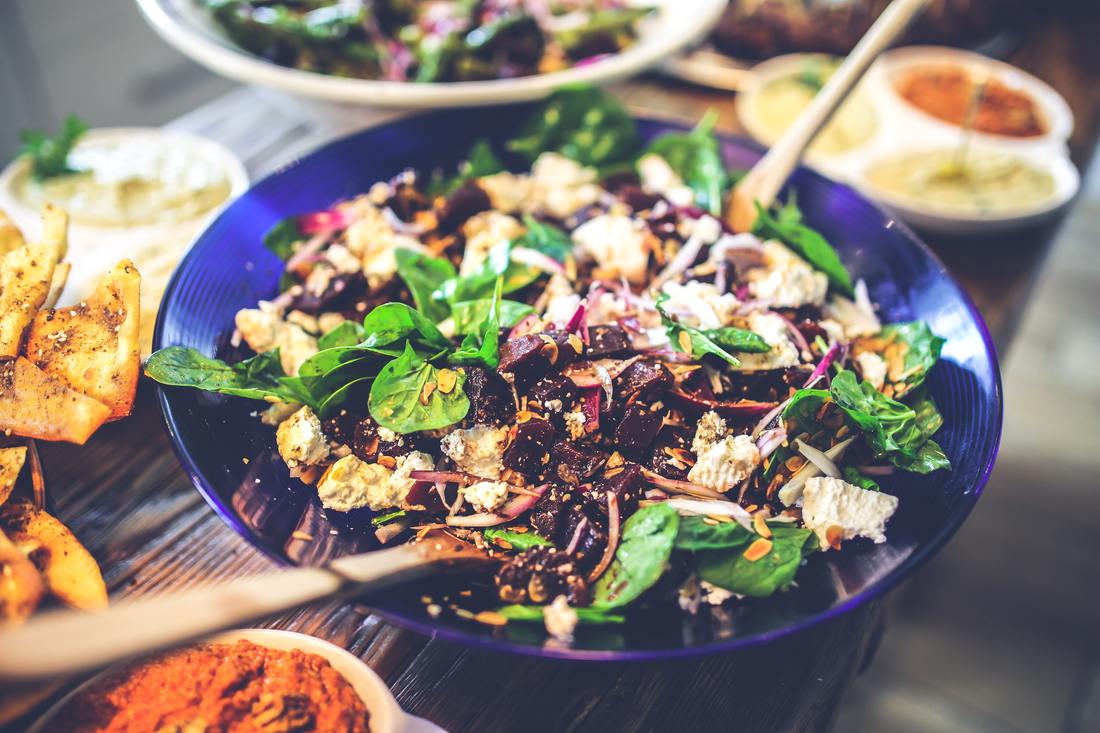|
You might have found this page because you’re wanting to encourage your child’s already healthy development in eating habits and skills - but it may also be that you’re looking for help to figure out why mealtimes have become a battlefield. This article is for you either way! We’re going to look at 3 tips and tricks that can help you support your children to enjoy mealtimes. Before we get started, it’s important to remember that every child is a unique individual and that understanding their unique traits may be really important to help us figure out what might be driving mealtime difficulties. The tips in this article are general in nature and not intended to replace therapeutic support from a dietitian. 1. Make vegetables fun! Sometimes we slip into a pattern of bribing kids with delicious treats if they only eat their vegetables. This can mean that we’re accidentally giving kids the (mistaken!) impression that vegetables are the bad guy and the treat (i.e. ice-cream) becomes the knight in shining armour. Obviously we want to be helping our kids experience their vegetables as fun, delicious, and exciting. Getting kids involved with vegetable selection at the supermarket or green grocer, and with the preparation of their meals, can encourage them to try new and varied vegetables. If we do want to reward our kids’ exploration of foods, trying using non-food items as rewards. Stickers or extra play time are more effective rewards than other foods. 2. Make food exploration fun! It can be normal for adults to view eating and mealtimes as serious business - and it is, but it’s also behaviour under development for kids and can be a lot more complex than we ever thought before we had kids. In fact, did you know that eating involves a 32 step process? I had no idea before I became a dietitian. Trying a food might be a sniff, a lick, or picking a food up to explore it with hands - eating a full serving isn’t necessarily something we can expect, especially for kids going through a phase of fussy eating. One of the steps in developing eating behaviours is interaction with our food - i.e. getting messy. When a child engages all 5 of their senses, they can work up that eating ladder consisting of the 32 steps, and that is exactly what is needed for them to feel a food is safe enough to actually put in their mouths. It can be really tricky to let kids play with their food - I don’t know about you but when I tried to play with my food as a kid, I was told that it wasn’t a toy! It can be especially tricky for adults who really enjoy, and work really hard, to keep a clean and tidy home to let their kids get messy with food - but it’s such an important part of developing eating skills for children. When kids are able to touch, feel, and mash foods between their fingers they are actually engaged in the really tricky process of developing those eating skills - so next time you’re tempted to stop your child from ‘playing’ with their food, try to challenge yourself and see where your child’s play leads them. You may be surprised that more food ends up in their mouths than ever before! 3. Help kids understand mealtime boundaries with regard to alternative foods Generally speaking the parents I work with all have in common that they want their kids to be happy, healthy - and well behaved! It can be really hard when parents feel their kids aren’t eating enough to help them be happy and healthy, and sometimes parents might slip into a pattern of offering a more preferred food as an alternative to a meal that their child doesn’t want to try or to eat. This is really understandable - nobody wants their child to starve or to be so hungry that they don’t sleep or grow well. When we slip into this pattern of offering up alternative meals, we can accidentally dampen a child’s natural curiosity for new foods or family meals, because if they just wait a little bit they’ll be offered a delicious alternative! This isn’t what we’ve meant to do at all, and after we’ve accidentally led our kids into this pattern it can feel impossible to get out of. Rather than offering a totally alternative meal when your child doesn’t like what you’ve served up to the whole family, try to make sure there is at least one desirable and safe food option on your child’s plate with every meal. This means that there will always be at least one component of the meal that they will be happy to eat, alongside newer or less familiar foods that might need to be explored. This can remove the anxiety and pressure for you AND for your child - they’re still filling their bellies with something nutritious, and don’t come to expect a whole new food if they just refuse to eat dinner with the family. You also don’t have to be preparing whole new meals for each member of your family! If you’ve already fallen into this trap accidentally, don’t worry! You can roll it back from here. Start asking your child what the one safe/desired food option should be on their plate tonight, and then let them know that there will also be other less familiar options for them to explore. Do you feel like mealtimes are a battleground and you’re not sure how to support your child to enjoy mealtimes again? You may benefit from the support of one of Hopscotch and Harmony’s dietitians who can support you with a structured approach to food exposure based on your child’s current eating patterns, and to work on your goals from here. You can use THIS form to request an appointment today.  In a world where we are encouraged to grow and thrive, we are also conditioned that weighing less equates to health. This relationship between weight and health fails to fully recognise the complexities of weight loss nor does it acknowledge the risks associated with these messages. This toxic dialogue is drilled into us from a young age, and is almost unescapable unless you live under a ‘rock’. It swamps us on our social media pages from #fitspo to food pics of ‘super healthy’ bowls of rabbit food with a side of magical sprinkles which somehow detoxes you from head to toe. You may also be aware of every second ad on TV selling an ‘ab king pro’ or a new weight loss program that are marketed with the words; health, non-restrictive and mindful. Maybe you have an experience of hearing about a family member or close friend's newest dieting fad and not hearing the end of it. I would like to introduce a term called ‘diet-culture’ and this is what diet culture is in a nutshell. The diet industry is a multimillion-dollar industry who make their money off our failed dieting attempts. I say this with respect, it’s not you, it's them. Diets suck and they all go bottom up because most humans cannot stick to them. Then the dieting cycle starts – restrict, HUNGER, refuel, feel guilty (because your body did its job and responded to restriction) ….so you tell yourself you’ll start again Monday. Do you believe me now when I say its unescapable? The sad truth is, if a body does not fit into what society deems is an okay body, our world encourages behaviours alike to behaviours of someone with a clinical eating disorder. The catch is… health is so much more than what we look like, how much we eat and what size jeans we fit into. The issue is that it is incredibly complex and when we comply to societies standards it can be counterproductive and effect your relationship to your body, exercise, and food. This doesn’t mean nourishing your body goes out the window. It means it can be done in a way that you can sustain and enjoy – with a side of gentle nutrition and self-compassion. For all bodies, nourishment is always going to assist in achieving wellness. Lauren works with clients from all over Australia via Telehealth so you can have an appointment with her from the comfort of your own home.
 Lauren Carmichael, Dietitian Lauren Carmichael, Dietitian You’re probably thinking ‘Eh…. another dietitian’. I know, I know, I hear you. I think we probably all have experienced the dreaded dietitian experience…the anxious build up prior to an appointment or perhaps a memory of being forced to step on a scale to feel more humiliated about our bodies. I understand that uncomfortable feeling all too well and can relate it to a herd of sheep cattle being lined up for slaughter. Did I say I hear you? Well, I can reassure you that this old way of practicing has long been thrown out the window. I mean the very back window, thrown in the trash then sent to the garbage tip. Old news! My goal as a dietitian is to assist my clients in freeing themselves from the guilt and shame around food and their bodies. I want to be able to change the thinking around societies expectations of us in terms of what we ‘should and should not eat’ and ‘should and should not look like’. I aim to guide and empower my clients to feel free from food and diet mentality so they can actually enjoy all the greatness of life. So, what do I do? During my assessments I take into consideration all the nitty gritty that makes you YOU! We discuss what makes up your life, medical histories and what you want to achieve from seeing me. This could be for a range of things, such as managing chronic disease or just stepping away from dieting because you have finally come to terms that they are just not for you. You’re not alone, for most people diets don’t work because no one can stick to them…..Mic drop. I also won’t force weigh you or make you feel pressured to tell me your number. Again, this is about you and if it ever comes up it is always discussed with your permission and with respect. We would then catch up regularly based on what would be appropriate for you and reflect and debrief on how you’re going then guide you in the right direction nutritionally until our next visit. How freeing would it be to stop putting our bodies through diet hell and start appreciating it for housing everything that makes us….US? Who’s with me? I work with clients all over Australia via Telehealth so if you want to overcome any food issues then enquire about a session now. Lauren Carmichael, Dietitian
"I consider myself a passionate and dedicated practitioner who practices under a body inclusive lens. I pride myself on being a non-diet dietitian meaning I try my best to steer away from diet culture and what our world says we ‘need to eat and do’ to be healthy. Instead, I put my focus on wellness which I am very aware looks different on everyone." There are many reasons you might feel frustrated if your child is experiencing eating-related challenges. For example, when your child:
Preparing for Healthy Eating HabitsHere are some things to consider as a way of developing healthy eating habits in the home environment:
Professional Support for Eating-Related ChallengesIt is important to check-in with your child and explore the reasons your child may be experiencing eating-related challenges. Young children may be experiencing power struggles at home. Pre-teens might be preoccupied with their body or friendship groups as they develop and become exposed to unrealistic body goals. Children may also be preoccupied with screen time during meals or feeling stressed about upcoming tests or social events at school. An alternative to constantly reminding your child to ‘just sit and eat’ or ‘finish everything on your plate’ is to take a skill building approach. A psychologist or paediatric dietitian can help the child build on the following skills that may be linked to eating-related challenges:
Children can learn to practice relaxation and eating new food mindfully in sessions with the psychologist or dietitian. Parents can also be provided with helpful resources around mealtimes and addressing challenging behaviours. By Shu-Lin Pook, Paediatric Dietitian 25% of children in Australia are either overweight or obese, and although the proportion of children getting bigger has remained stable, it is still 1 in every 4 children that is either overweight or obese. Weight management is not easy, and for a lot of families, it can be an unfavourable experience. Here are some of the statements or questions I tend to get when I see a child who has weight issues: Why is my child overweight/obese? When a child takes in more energy (from food and drinks) compared to the energy used for growth and daily activity, the excess energy will be stored in the body as fat. Most people will eventually become overweight or obese when they chronically take in more energy than what the body needs. It is something that is usually long term, as excessive weight gain is not something that happens overnight. But my child eats healthy! Yes, eating healthy is important. The definition of “healthy food” can have so many different meanings for different families. I am always hearing different opinions about what makes food “healthy”. Is it Organic? Vegan? Gluten free? Sugar free? Preservative free? Natural? Everyone is entitled to their opinion as to what is “healthy”, but more often than not it is not just the type of food that makes one overweight. It is also the portion that plays a big part on a child’s health. It is too hard to eat healthy Healthy eating is not something that you try for a week or for a month like a diet. Healthy eating, should really be part of your everyday lifestyle. I agree that fast food is cheap and convenient. BUT living on diets is not sustainable and therefore not likely to be successful in the long run. Part of healthy eating is having a positive relationship with food, and eating according to your hunger cues: eat when you are hungry, and stop when you are just full. It is genetics. My child is big because of me (or partner) Genetics certainly plays a role; there are some children who do have genetic or metabolic disorders that can increase their risk of being overweight or obese. However, genes alone do not explain why the rate of overweight and obesity is increasing at such an alarming rate. I feel like I am depriving my child when I restrict *junk food / chocolate / lollies, etc* Parents sometimes feel guilty for not providing their chid with discretionary food (food high in energy with very little nutrition). Remember, you are not depriving your child of love from not giving them discretionary food. There are many other ways and means to provide your child with love. It can be riding a bike together or going to the beach as a family and enjoy the time spent together. Think of food as something to nourish your child’s body rather than a treat or a reward. How much weight my child needs to lose? A child’s weight is different to an adult’s weight. Children are supposed to grow and gain weight, whereas the weight of a healthy adult should remain idle. For this reason, I do not recommend that children should lose weight. Rather, allow your child to grow into their weight by allowing their height to catch up to their current weight. Why does it matter? As long as my child is happy, that’s the most important thing. Unfortunately, it DOES matter. When a child carries too much weight, complications can occur. Medical complications such as developing fatty liver, diabetes, having sleep issues, respiratory issues (e.g. exacerbation of asthma), and pain in joints are just some of the complications. What about the psychological impact? Well, children who are overweight/obese are more likely to develop lower self-esteem, depression, negative body image, be discriminated against, and so forth. Ultimately, children who are overweight have a very high chance of being overweight as an adult. As a parent, you can make a difference! Here are somethings you can try right now at home:
Remember, your role as a parent is to provide your child with nutritious food and to make sure they grow well. If you would like to learn more about healthy eating and weight management, speak to an accredited practising dietitian who has experience working with children. Contact us if you would like to speak to me about how to manage your child’s weight, or how to get your child to build a positive relationship with food.
Instilling positive relationships with food in children can reduce the risk of long term health issues including obesity, negative body image and type 2 diabetes. Here are some tips to help children build positive relationships with food:
Ultimately, all food can be and should be enjoyed in moderation. The only time you should actively avoid a food is when you have a specific food allergy or food intolerance. |
Categories
All
|
Hopscotch & HarmonyAt Hopscotch & Harmony Psychology, you can expect compassionate care and evidence-based guidance on your journey to wellness.
With clinics in Werribee and Belmont, as well as providing online counselling to clients who live throughout Australia, our dedicated team of psychologists and dietitians are committed to providing support to children, teenagers and adults. With a focus on understanding your unique needs, we offer tailored solutions to foster growth and resilience. Trust in our experience and dedication as we work together towards your well-being. Welcome to a place where healing begins and possibilities abound. |
Our services |
Contact usHopscotch & Harmony
Child, Teen and Adult Psychology Our Locations:
WERRIBEE: 1/167-179 Shaws Rd
BELMONT: 92 Roslyn Rd AUSTRALIA-WIDE: Online counselling |
Hopscotch and Harmony respectfully recognise the Aboriginal and Torres Strait Islander people as the first Peoples of the continent now called Australia.
We acknowledge the Bunurong and Wadawurrung people of the Kulin Nation, the traditional owners of the land on which we work, and pay our respects to their Elders, past, present and emerging.
© 2024 Hopscotch and Harmony Pty Ltd









 RSS Feed
RSS Feed
